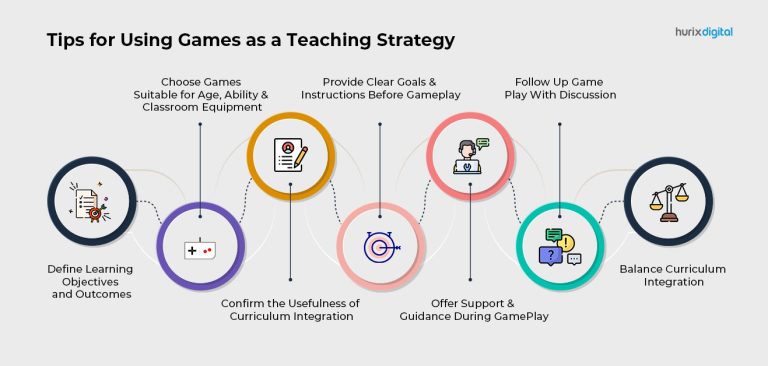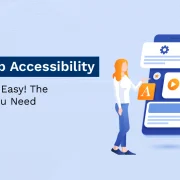
Integrating Games in Education: Using Games as a Teaching Strategy
Summary
This article discusses the benefits of integrating games in education. It discusses how educational games can be used to boost engagement with the material, promote active learning, and motivate students to learn more.
Integrating games into education is not a new technique. The gamification of learning is a proven method for teaching students. Educators have been using games as a teaching strategy since ancient times. Integrating games into education is successful because it makes learning engaging, active, and personal for students. As a result, using educational games in the classroom benefits students by bolstering problem-solving and critical-thinking skills, promoting collaboration, and motivating students to learn more.
Table of Contents:
- Why Game-Based Learning Is an Enduringly Successful Strategy for Students and Educators
- Top Digital Curriculum Providers Offer Games That Promote Active Learning
- Student Benefits of Games in Education
- Tips for Successfully Using Games as a Teaching Strategy
- Conclusion
Here’s How and Why Integrating Digital Games into Education will Continue to be a Successful Strategy for Students and Educators.
1. Digital Learning Games Get Students Excited About Learning
Game-based learning in the classroom is effective because children enjoy playing video games. Educational games have been shown to bolster engagement with the material, provide an active learning experience, motivate students to learn more, and offer a personalized learning experience.
2. Game-Based Learning in the Classroom Increases Engagement
Perhaps the most compelling reason most educators have begun integrating games into education is the immersive and interactive nature of digital learning games. When students are engaged in the material they are more likely to retain what they have learned, leading to a deeper understanding of the material.
Top Digital Curriculum Providers Offer Games That Promote Active Learning
Active learning occurs when students can actively explore concepts. Consider these game-based learning examples.
1, Game-Based Learning Examples: History Games
Instead of only listening to oral instruction (passive learning) about a historical event, students can follow up and engage in active learning by playing a History video game.
For example, a lecture about the first European settlement of what would become the United States can be supplemented via a game to achieve curriculum integration. In this example, a student may play a game based on the same event, as seen from the perspective of both the colonists and the Natives impacted by the arrival of Europeans. In this way, using educational games in the classroom helps to bring the lesson to life by promoting active learning.
2. Game-Based Learning Examples: Maths
Students have learned maths by solving problems on paper for years. This is still an incredibly effective teaching strategy. But integrating games in education via engaging, and friendly competition to solve math problems quickly and correctly can bolster students’ engagement with the material resulting in a deeper understanding of mathematical concepts.
3. Integrating Games in Education Offers a Personalized Learning Experience
Many games available from leading digital curriculum providers offer students the opportunity to personalize their learning experience. Most digital learning games offer different levels of difficulty, allowing students to learn at their own pace. Moreover, thanks to instant feedback via in-game assessments, students may self-correct in real-time, learning from mistakes privately, thereby eliminating any perceived fear of failure in front of their peers.
Student Benefits of Games in Education
We know that using educational games in the classroom increases student engagement, promotes active learning, and offers a personalized learning experience. But those are just a few reasons students enjoy curriculum integration with games. Here’s how students benefit from educators integrating games into education.
1. Digital Learning Games Focus on Problem-Solving and Critical Thinking
Educational video games often require students to think critically, strategize, and solve problems. By integrating games in education that align with the curriculum, educators provide opportunities for students to develop, hone, and apply problem-solving skills, logical reasoning, and critical thinking abilities. These transferable skills will serve students in both academia and beyond.
2. Game-Based Learning in the Classroom Cultivates Teamwork and Collaboration
Millions of students across the globe were sent home from school during the COVID-19 pandemic. Instead of learning alongside their peers, they were forced to learn alone for months or years at a time. For some students, returning to the classroom has resulted in collaboration and teamwork feeling unfamiliar or uncomfortable. Using games as a teaching strategy can help to cultivate a sense of teamwork and collaboration that may not come naturally to students.
When students team up to accomplish a goal, social interaction and camaraderie often follow. Students are likely to support one another’s learning when they share the common goal of achieving an objective or winning a game. As a bonus, some students will naturally develop leadership skills within the team. Both teamwork and leadership are transferable skills that will serve students well beyond their formal education.
3. Using Games as a Teaching Strategy Can Boost Motivation
Educators continue integrating games into education because games promote student motivation. Students may be motivated in a couple of ways. Firstly, curriculum integration with games can be seen as a reward for students. For example, after a successful lecture, or completion of assignments, offering students playtime on computers can be used as a reward.
Using educational video games in the classroom can also motivate students to dive deeper into learning because they want to get to the next level of gameplay. Alternatively, they may want to see their name in the top spot on the leaderboard. Boosting motivation is an excellent reason to consider integrating games into education to complement the K12 curriculum.
Also Read: How Can Teachers Leverage AI in K12 Education?
7 Tips for Successfully Using Games as a Teaching Strategy

Integrating games in education should not be done without careful thought, planning, and research. Thoughtful curriculum integration can be accomplished by:
-
Define Learning Objectives and Outcomes
Determining the specific learning outcomes sought from various digital learning games. You may look for concepts, skills, or knowledge you wish students to acquire by playing the game.
2. Choose Games Suitable for Age, Ability, and Classroom Equipment
To be successful in integrating games into education, the games need to be age appropriate and align with student abilities. Equally important, educators must ensure that the classroom is equipped with the devices and technical capabilities for each game to be played as designed.
3. Confirm the Usefulness of Curriculum Integration
Most video games will be fun for students. But all digital learning games used must be not only fun but that they align with the curriculum. It’s best to Identify games that allow for seamless curriculum integration, irrespective of subject matter to reap the greatest benefits.
4. Provide Clear Goals and Instructions Before Gameplay
To achieve the best outcomes from game-based learning in the classroom, educators should provide very clear game objectives and very clear instructions for how to play the game.
5. Offer Support and Guidance During GamePlay
Educators should be available and eager to help students while they are playing digital learning games. To best help students during gameplay, educators should know how to play the games themselves. Fortunately, most digital curriculum providers offer free game demos and other support so that educators are familiar with how each game works.
6. Follow Up Game Play With Discussion
Educators who are most successful at integrating games into education never let the game be the final lesson. Instead, after gameplay, a discussion of game-based learning examples provided in the game helps reinforce the knowledge and skills used and acquired during gameplay.
7. Balance Curriculum Integration
Although using games as a teaching strategy offers myriad benefits, digital learning games are not meant to replace traditional teaching methods. Using educational games in the classroom should serve to complement, supplement, or otherwise elevate other teaching strategies.
Also Read: Why Curriculum Integration Should Be A Priority In Education
Conclusion
Intending to foster independent learning in students and prepare them for the global workplace, educational video game learning in K12 education is more in line with changing pedagogical practices. The benefits are obvious, the technology is available, and K12 education is at the ideal time to utilize video technology.
Hurix is one of the world’s leading digital curriculum providers for K12 educators. Hurix has partnered with Game Learning to bring this innovation to the education industry.
To learn more about digital learning games, or K12 curriculum integration, contact us today.
Frequently Asked Questions (FAQs)
1. How can teachers effectively integrate games into their lesson plans?
A. Teachers can effectively integrate games into their lesson plans by aligning them with specific learning objectives, providing clear instructions and guidelines, incorporating pre-game and post-game discussions, and making connections between the game and real-world applications.
2. How can games support differentiated instruction?
A. Games can support differentiated instruction by providing options for different learning styles and abilities, allowing students to learn at their own pace, and offering adaptive features that provide targeted support and challenges.
3. Do games align with curriculum standards?
A. Many educational games are designed to align with curriculum standards, ensuring that they cover specific learning objectives and content areas, making them valuable tools for supporting classroom instruction.
4. Can games be used for both individual and collaborative learning?
A. Yes, games can be used for both individual and collaborative learning. Some games offer multiplayer features, allowing students to collaborate, compete, and learn together, while others provide individual learning experiences.
5. What should you consider when selecting educational games as a teaching strategy?
A. When selecting educational games, consider factors such as the educational value, relevance to curriculum objectives, age appropriateness, quality of content and design, level of interactivity, and availability of supporting resources or assessments.





